Ten Years of Disease Surveillance in Kashmir, India under Integrated Disease Surveillance Programme (IDSP) During 2006-2016
2 State Epidemiologist, IDSP, Division of Epidemiology and Public Health, RFPTC Building, Barzulla, Srinagar, Kashmir, India, Email: kadrism@gmail.com
3 Director Health Services, Kashmir, India, Email: saleem123@gmail.com
4 Epidemiologist in Department of Health Services, Kashmir, India, Email: kausar258@gmail.com
5 Research Associate, University of Athens, Greece
6 State Microbiologist,Integrated Disease Surveillance Programme, Kashmir,, India
Citation: Kadri SM, et al. Ten years of Disease Surveillance in Kashmir, India under Integrated Disease Surveillance Programme (IDSP) During 2006- 2016. Ann Med Health Sci Res. 2018; 8: 19-23
This open-access article is distributed under the terms of the Creative Commons Attribution Non-Commercial License (CC BY-NC) (http://creativecommons.org/licenses/by-nc/4.0/), which permits reuse, distribution and reproduction of the article, provided that the original work is properly cited and the reuse is restricted to noncommercial purposes. For commercial reuse, contact reprints@pulsus.com
Abstract
Introduction: Integrated Disease Surveillance Programme (IDSP) is a decentralized districtbased system of weekly surveillance for communicable diseases, initiated in Jammu and Kashmir, India during 2006-2007. This article aims to evaluate its physical performance regarding prevention and management of disease outbreaks as well as strategic actions that promoted public health during the last decade. Methods: IDSP report disease alerts/ outbreaks on a weekly basis, and the information flow follows its administration structure (Rapid Response Teams, State/District and Central Surveillance Units). Diseases covered under IDSP include Air, Water, Vector Borne Diseases as well as Vaccine Preventable Diseases and laboratory work for confirming an outbreak includes testing of water & blood samples, stool, and urine, wound or blood cultures. Results: In the latest years, IDSP has investigated more than 300 disease outbreaks, and more specifically 16 outbreaks in 2011, 54 in 2012, 57 in 2013, 45 in 2014, 45 in 2015, 51 in 2016 and 52 in 2017 (Jan-August). Major outbreaks investigated include the Cholera outbreak in Waterhail (2010), the Influenza A H1N1 outbreak in Sangerwani and Ardibal (2011), the Hepatitis C outbreak in Anantnag District (2013) as well as the Hand Foot and Mouth Disease outbreak in District Leh (2016). Furthermore, it founded the water quality monitoring programme and promoted the intersectoral co-ordination with animal husbandry department for the management of zoonoses. Conlusions: IDSP has been a great asset to Kashmir’s public health during the last decade, rais-ing community health awareness and contributing to the effective and timely management of disease outbreaks.
Keywords
Disease outbreaks; Water quality; Epidemiology; Public health surveillance; Preventive medicine
Introduction
Integrated Disease Surveillance Programme (IDSP) is a decentralized district-based system of weekly surveillance for communicable diseases so that timely and effective public health actions can be initiated in response to the incidence of disease outbreaks in the urban and rural Areas. It was initiated in Jammu and Kashmir, India during financial year 2006- 2007 under NSPCD (National Surveillance Programme for Communicable Diseases).
The main objectives of the programme are the detection of early warning signals of impending outbreaks, the integration, coordination and decentralization of surveillance activities, the establishment of a system for quality data collection, reporting, analysis and feedback using Information Technology (IT) and finally the improvement of laboratory support for disease surveillance.
IDSP’s responsibilities include the strengthening of epidemiological capabilities at State and District level by training of District Rapid Response Teams (RRT) and Health personnel at the periphery, the modernization and computerization of State and District Epidemiology cell as well as the strengthening of State/District Laboratories by improving Sub-District Mobility and Communication. Furthermore, it invests itself into informing and mobilizing the public audience through Information, Education and Communication (IEC) Activities, thus encouraging individuals to familiarize with healthy behaviors.
Our article aims to review IDSP’s physical performance in Jammu & Kashmir during the last decade, evaluating the degree of its effectiveness regarding detection of outbreaks, early establishment of containment measures, along with reduction in morbidity and mortality and minimization of economic loss, which constitute the expected outcomes of the programme.
Methods
IDSP’s administration structure is made of a Central Surveillance Unit (CSU) based at National Center for Disease Control (NCDC) in New Delhi, a State Surveillance Unit (SSU) in Barzulla, Srinagar and twelve District Surveillance Units (DSU), one in each of the twelve districts (Anantnag, Budgam, Baramulla, Bandipora, Ganderbal, Kulgam, Kupwara, Pulwama, Shopian, Srinagar, Leh, Kargil) [Figure 1]. Furthermore, each District Surveillance Unit is supported by a RRT as shown in Figure 2 whereas the information flow of the Weekly Surveillance System followed in order to ensure accurate and timely data reporting is presented in Figure 3.
During the last decade, IDSP has been in charge of reporting such disease alerts/outbreaks on a weekly basis. The weekly data provide insight into disease trends as well as disease seasonality. If a rising trend of an illness is suspected in any area, it is firstly investigated by the Rapid Response Teams (RRT) in order to diagnose and control the outbreak. Then, data analysis and actions are being undertaken by respective State/ District Surveillance Units, whereas emphasis is now being laid on reporting of surveillance data from Major Hospitals as well as Infectious Disease Hospitals. [1]
Laboratory work includes testing of water samples, blood samples for serology, stool, urine, wound and blood cultures as well as ELISA test for HCV, HbsAg, anti-HAV IgM and anti- HEV IgM.
Diseases covered under IDSP for investigation include:
Air borne diseases: Acute Respiratory Infection (ARI), Meningococcal meningitis.
Water borne diseases: Acute Diarrheal Disease (ADD), Bacillary dysentery, Viral hepatitis, Enteric fever, Cholera and Fever of Unknown origin (FUO).
Vector borne diseases: Malaria, Dengue/DHF/DSS, Chikungunya, JE and Zika virus disease (ZIKV).
Vaccine preventable diseases: Measles, Chicken pox, Diphtheria.
Outbreak investigation
Urbanization, travelling and district connectivity along with pervasive poverty and climate change contribute to the rise of disease outbreaks globally. Since 2005, the district of Kashmir has suffered from numerous important disease outbreaks, such as Influenza A H1N1, Measles, Hepatitis C, B and ADD, as depicted in Figure 4.
In the latest years, IDSP has investigated more than 300 disease outbreaks, and more specifically 16 outbreaks in 2011, 54 in 2012, 57 in 2013, 45 in 2014, 45 in 2015, 51 in 2016 and 52 in 2017 (Jan-August).
Furthermore, IDSP performed 2597 laboratory tests in 2015, 2739 tests in 2016 and 1707 tests in 2017 (till August).
One of the first disease outbreaks investigated was the post earthquake outbreak of rotavirus gastroenteritis in Kashmir in 2005, with 1783 ADD cases (14 Oct-17 Dec.) in Tangdar, an area of 65000 residents. After IDSP investigation, all 8 water sources in Tangdar block were unsatisfactory (blackening of H2S filter paper strips) so this common-source rotavirus outbreak was attributed to the post-earthquake contamination of drinking water sources, such as stream and tap water, leading to ADD amongst infants and small children. Other contributing factors of the disease spread included overcrowding, poor sanitation, open-air defecation, poor hygiene as well as living in makeshift camps near streams. [2]
Furthermore, under the initiative of MeaslesNetIndia, a national network of 27 centers and sentinel practitioners, epidemiological investigation of Measles and identification of seasonality patterns was carried out in Jammu and Kashmir during the outbreak of 2007 (Mar-May) where further molecular studies revealed a D4 strain of Measles virus. [3] The same strain of Measles virus was also isolated in positive samples during the investigation of a measles outbreak in Leh and Kargil districts of Ladakh, where 736 cases were studied with 281 patients (38.2%) being older than 10 years, suggesting the need of a repeat dose of measles vaccine in adulthood [Figure 5]. [4]
In August 2010, IDSP faced the challenge of a Cholera outbreak in Waterhail (Khansahib Block) of Budgam District and four adjacent blocks sharing the same contaminated water supply (Beerwah, Khag, Budgam and Soibug) that also got affected within 24 hours. There was a total of 2591 cases and 12 deaths and after careful investigation, Vibrio Cholerae O1 El tor (Ogawa) was confirmed at Public Health Laboratory, Barzulla and cross checked at Microbiology Lab of the Government in Srinagar.
In 2011, an IDSP investigation of Influenza A H1N1 outbreak in the villages of Sangerwani and Ardibal, in District Shopian, Block Keller suggested that Influenza A H1N1 was affecting extremes of age (more pediatric age group and geriatric age group). With 116 cases and 1 death, there were eleven positive samples for Inf A H1N1 out of thirty samples tested, suggesting a positivity rate of 36.33%.
Other major outbreaks investigated include the 2013 Hepatitis C outbreak in Village Takaya Magam, Anantnag District, with 1114 cases positive for HCV, [5] the 2015 Hepatitis B & C outbreak in Sagam, Anantnag District with 75 cases positive for HCV and 8 cases positive for HbsAg and the Chicken Pox outbreaks in 2013, 2014 and 2015 which affected 8 districts with a total of 80, 97 and 129 cases respectively. [6]
Most recent outbreaks include the 2016 Hand Foot and Mouth Disease (HFMD) outbreak in District Leh (HFMD) with 465 cases that affected children < 10 years old from 12 villages (Choglamsar, Saboo, Leh, Solar colony, Hemis, Igoo, Taru, Meru, Bogdang, Augling, Meru, Bema), the Gastroenteritis outbreak of 2016 in the Anantnag District with 780 cases as well as the First Eye related illness (Acute viral conjunctivitis ) since inception of IDSP in a residential hostel in Tharuk, Tangtse Block of District Leh in 2016 with 48 cases among children 11-18 years old. Additionally, another successful mission of IDSP Kashmir of the investigation of Hepatitis C co-infection in the Leprosarium of Srinagar in Kashmir, where a total of 36 out of 79 leprosy patients (45,5%) were found seropositive for Hepatitis C and 1 male of them (1,2%) was also found positive for HBsAg. This study gave insight into the need of a tailored surveillance system for Hepatitis C co-infection in leprosy patients, especially for the institutionalized ones. [7]
Most recently, IDSP has been monitoring the occurrence of Mumps outbreaks in Kashmir Division for the year 2017 (Jan- Sept). So far, there has been 15 outbreaks recorded, with a total of 260 confirmed cases in the districts of Pulwawa, Shopian, Kupwara, Kulgam, Srinagar, Baramullah and Bagdam. Districtwise mapping and dates of outbreaks can be seen in Figure 6.
Water quality monitoring
Another contribution of IDSP Kashmir to public health and well-being is the Water Quality Monitoring programme by the District Priority Laboratory (DPL), which is in charge of conducting bacteriological analysis of reservoir/tap water on monthly basis in order to ensure safe portable water, fit for human consumption, in all 12 districts of IDSP Kashmir. Based on the programme, regular random sampling of water at main base camps is collected by DSUs of respective districts and then get tested in Public health laboratory (PHL) at Barzulla, Srinagar, Kashmir. Most probable number (MPN) coliform count test is used to check for bacteriological contamination and water quality is rated as Excellent (MPN=0), Satisfactory (MPN=1-3/100 ml), Suspicious (MPN=4-10/100 ml) or Unsatisfactory (MPN>10/100 ml). After sample testing, the results are communicated to the concerned DSUs, Chief medical officers of the concerned districts and at the same time regular health education regarding safe drinking water and sanitation is provided by CHOs and Health Educators through infographics. Speaking of numbers, in 2015, 15 water samples were tested whereas in 2016 the total number increased to 30 water samples, a 100% increase of the water sample size. This programme is of great value as it permits the early detection of water-borne diseases and thus the prevention of water-borne epidemic outbreaks. Furthermore, the monitoring of water quality provides insight into the relationship of the ecosystem with people’s activities and the intervention of the latter into nature.
Strategic health operations centre (SHOC)
Except for outbreaks surveillance and management, IDSP Kashmir has also been devoted into surveillance during disasters, such as floods and earthquakes. In order to serve this purpose, a Crisis Management Center was established at State Surveillance unit at Barzulla, Srinagar during September 2014 floods along with a House to House survey of community health assessment.
Furthermore in the same unit at Barzulla, Srinagar a Control Room for Influenza A H1N1, MERS CoV and Zika Virus disease was established. Specifically, regarding Influenza A H1N1 during October 2014 - April 2015, 71 samples were collected, out of which 24 were found positive, whereas during 24 October 2015 - April 2016, 54 samples were collected, with 0 out of them being positive.
Advisories and surveillance
IDSP has been deeply devoted into surveillance of epidemic prone diseases by means of District Surveillance units and RRTs and through accomplishing missions such as the passive surveillance of Hajj Piligrims at Srinagar International Airport for Influenza A H1N1, MERS CoV and Ebola virus disease (30th Sept - 14th October 2015), the Help-Desk for MERS CoV Hajj Pilgrims at Srinagar International Airport, the issue of public health advisories to all districts regarding Influenza A H1N1, Prevention of water borne disease during Floods, Hepatitis, Measles, Acute diarrhoeal diseases (ADD), ARI, Cholera, Chicken Pox, Ebola or MERS-CoV from time to time as well as the issue of public health advisories to all districts regarding Zika Virus (ZIKV). [8] Regarding alerts, activities and information about outbreaks, informative articles and advisories are published in print media like newspapers and journals in order to inform general public about the possible prevention and containment procedures.
Infographics
Infographics are graphic visual representations of information, data, or knowledge intended to present information quickly and clearly. They can improve cognition by utilizing graphics to enhance the human visual system’s ability to see patterns and trends. [9] IDSP infographics, regarding current public health issues, are printed on a regular basis and displayed at health institutions as well as getting distributed among the community. Issued “advisories†in the form of infographics greatly contribute in raising public awareness and reducing outbreak numbers as they help people understand basic health principles in a simple and comprehensive way, as depicted in Figure 7.
Intersectoral co-ordination with animal husbandry department
IDSP’s latest strategic action involves the inclusion of Veterinary officers in RRTs of State and District. With 12 Veterinary officers, one for each of the twelve districts, and one officer in charge of the whole Kashmir Division, IDSP is in the process of establishing a National Rabies Control Programme in joint collaboration with Animal Husbandry Department. Such collaboration would be valuable for the prevention and control of various zoonoses, such as rabies and rickettsioses, which can be not only difficult to diagnose but also fatal if not treated promptly.
Discussion
IDSP has played a major role in the shaping of Kashmir’s public health through the timely and effective management of disease outbreaks, the regular issue of public health advisories and the continuous surveillance of diseases as well as through its intersectoral co-ordinations with other health-related departments.
It is worth mentioning that since 2013, the percentage of reporting from Reporting units (RUs) from all the districts of Kashmir division (12 districts) has increased from 78% in 2013 to 91.65% in 2016, whereas the number of outbreaks has declined (from 57 in 2013 to 51 in 2016), a fact that could be attributed to the provision of health education to the community at a district level as well as to the successful control of outbreaks in a timely manner as a result of early intervention.
Health education and public awareness regarding communicable disease is given to the community both in print (posters, pamphlets etc.) and electronic media (Radio and TV) as well as on Social media, whereas education about emerging viral diseases like Influenza A H1N1, MERS COv, Ebola Viral disease (EVD) and Zika virus disease (ZIKV) is also given to health care workers along with the community members.
Furthermore, various measures have been taken in order to prevent further spread and minimize future outbreaks. These measures apart from health education regarding the prevention and control of disease, include continuous case monitoring and reporting, early identification of cases and isolation, personal hygiene measures, medications, vaccinations, water chlorination, food safety measures as well as IEC activities.
Conclusion
It is therefore, readily understood that IDSP during its 10 years of surveillance has proved to be of great value to the Jammu & Kashmir community, advocating the asset of public health and population’s wellness, with the help of contemporary medical and laboratory equipment as well as IDSP’s human resources.
Ethical Statement
Ethical clearance was obtained from Ethical committee of Directorate of Health Services, Kashmir, India
Acknowledgements
State surveillance officer (SSO) Kashmir wishes to thank Director Health Services Kashmir, Mission Director NHM, Deputy Director Schemes for their continuous support and motivation.
My thanks to Chief Medical officers (CMOs), Medical Superintendents, District Health officers (DHOs) of all the districts of Kashmir division that contributed many ways in compilation of this work
Thanks to staff at District surveillance units (DSUs) in all the districts.
Special thanks are extended to Staff at State surveillance unit namely Ms. Irfana Bhat ( DEO) for compilation of data.
Conflict of Interest
All authors disclose that there was no conflict of interest.
REFERENCES
- National Centre for Disease Control, Directorate General of Health Services. Integrated Disease Surveillance Programme. Integrated Disease Surveillance Programme.
- Karmakar S, Rathore AS, Kadri SM, Dutt S, Khare S, Lal S. Post-earthquake outbreak of rotavirus gastroenteritis in Kashmir (India): an epidemiological analysis. Public Health. 2008; 122: 981-989.
- Wairagkar N, Chowdhury D, Vaidya S, Sikchi S, Shaikh N, Hungund L, et al. Molecular epidemiology of measles in India, 2005–2010. Journal of Infectious Diseases. 2011; 204.
- Parray SH, Gaash B, Ahmad M, Kadri SM. Changing face of measles in Kashmir. Indian Journal for the Practising Doctor. 2008; 5: 5-6.
- Saleem-ur-Rehman S, Kausar R, Kadri SM, Hakim MS, Bilal-ur-Rehman B. Epidemic of hepatitis C in a remote village of Kashmir, India. EC Bacteriology and Virology Research. 2016.
- Kadri SM, Saleem-ur-Rehman S, Kausar R, Irini G. Rising trends of chicken pox outbreaks among school children in Kashmir, India-Suggestions for Health Policy. EC Bacteriology and Virology Research. 2.5, 2017; 179-190.
- Saleem-Ur-Rehman S, Kadri SM, Kaunsar R, Irini G, Dar Farooz A, Afshan A. Leprosy and hepatitis C co-infection:. Leprosy Review. 2017; 88: 227-236.
- Kadri SM, Saleem-ur-Rehman S, Kausar R, Irini G. Zika Virus Disease (ZIKV) Infographics, Language-tailored: Innovations and Good Practices in Integrated Disease Surveillance Programme. Journal of MPE Molecular Pathological Epidemiology. 2016.
- Wikipedia. [Online] https://en.wikipedia.org/wiki/Infographics.

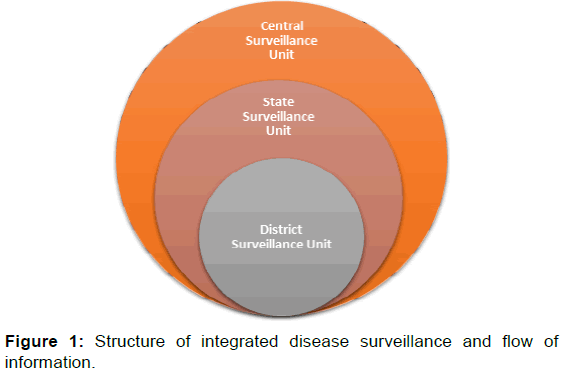
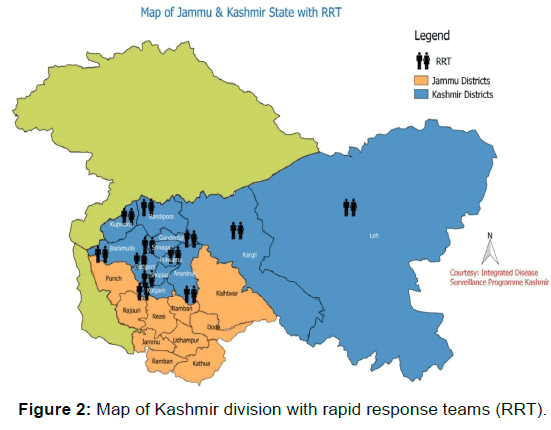
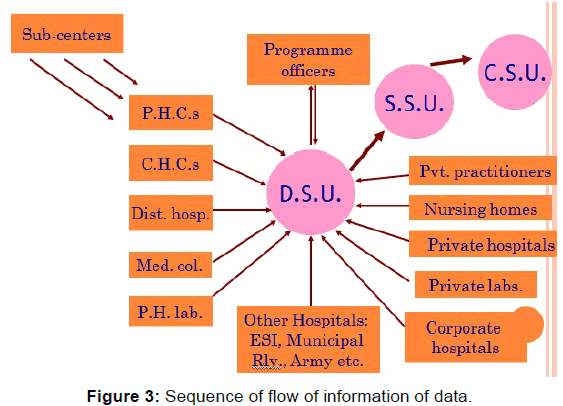
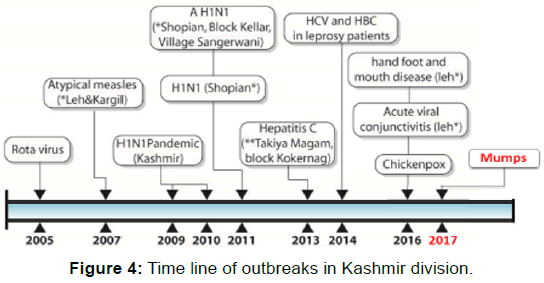
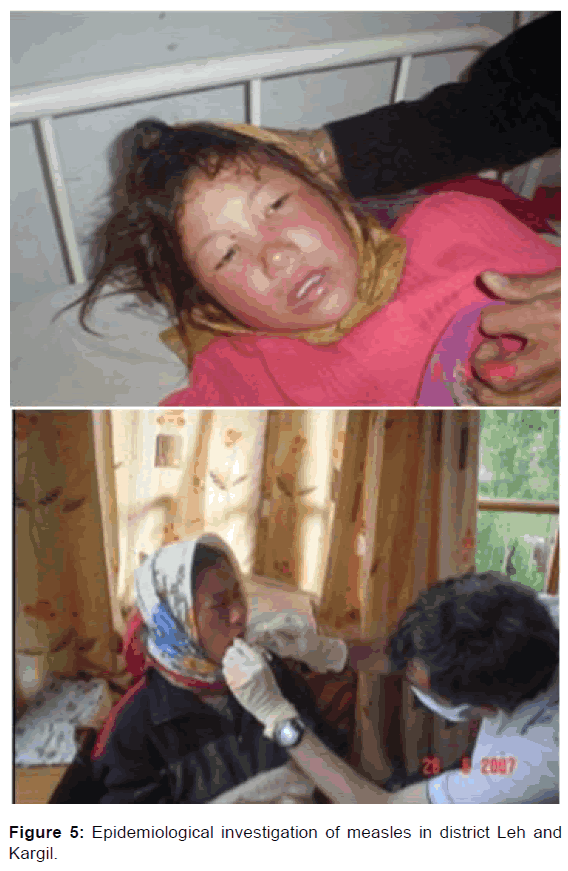
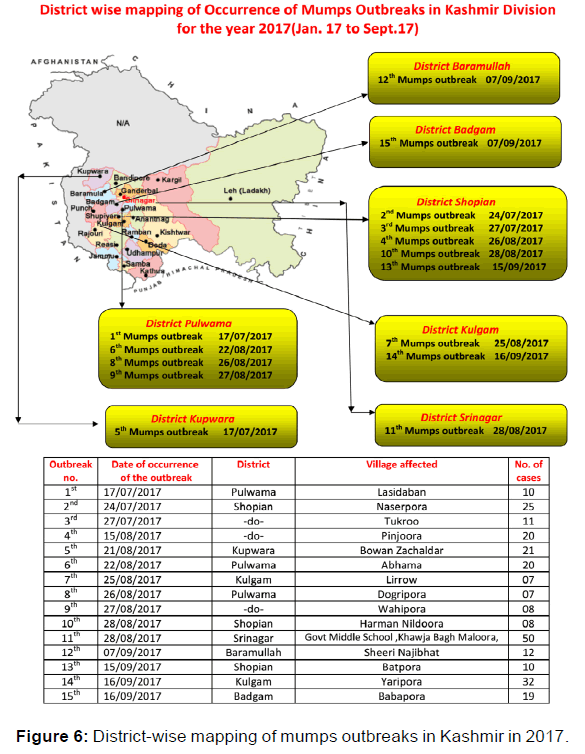
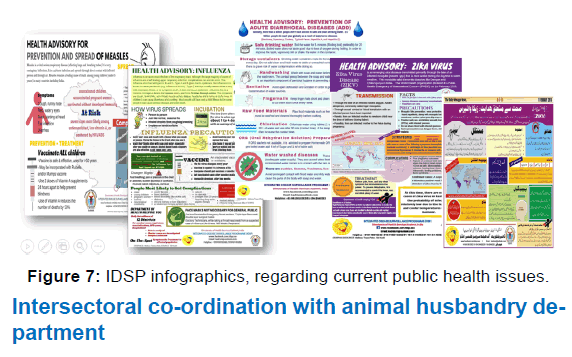



 The Annals of Medical and Health Sciences Research is a monthly multidisciplinary medical journal.
The Annals of Medical and Health Sciences Research is a monthly multidisciplinary medical journal.